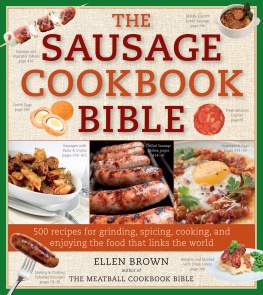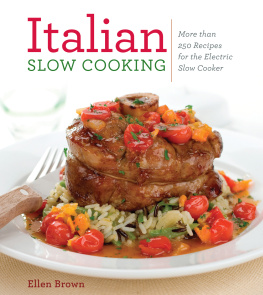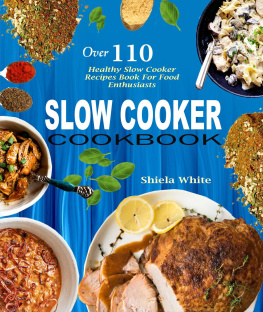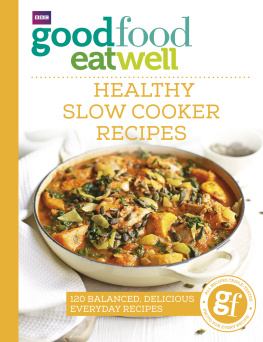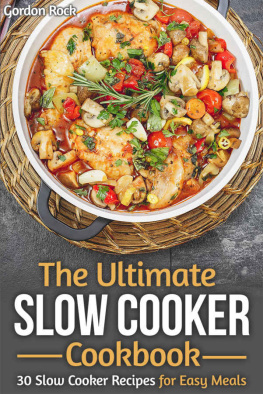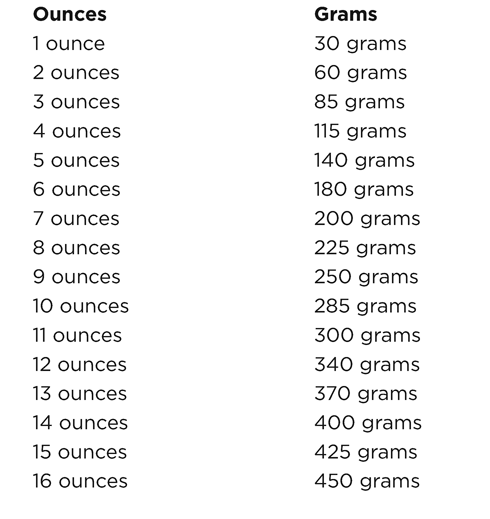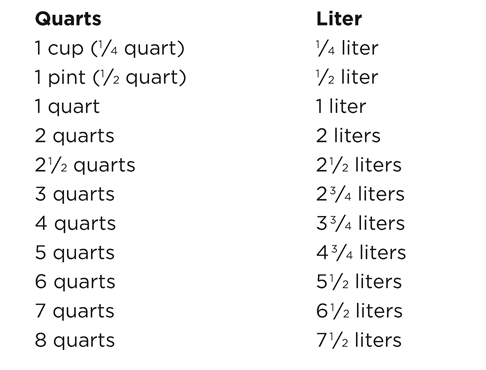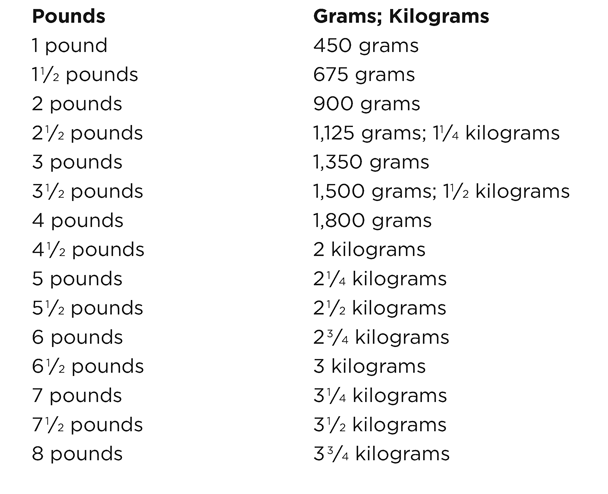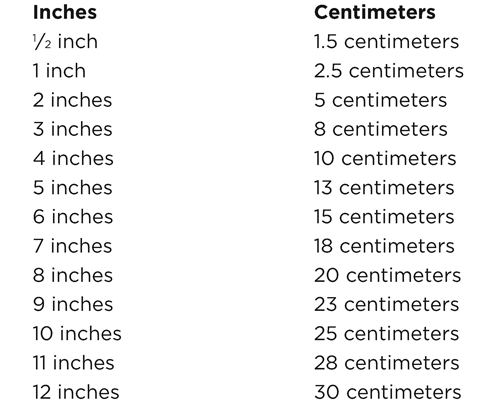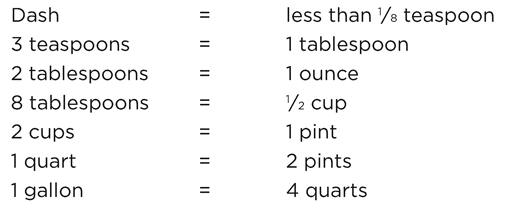Acknowledgments
While writing a book is a solitary endeavor, its publications is always a team effort. My thanks go to:
Ed Claflin, my agent, who offers constant support and a great sense of humor as well as his expertise to all my projects.
Eugene Brissie of The Lyons Press, for his faith in me and my ideas, and who launched me on the road to slow cooking many years ago.
Ellen Urban of The Lyons Press, editor extraordinaire, for her guidance and help all through the production process, and Jessie Shiers for her eagle-eyed copy editing.
My many friends who shared their culinary wisdom and tips for saving money.
Tigger and Patches, my furry companions, who personally endorse all fish and seafood recipes.
Appendix A:
Metric Conversion Tables
The scientifically precise calculations needed for baking are not necessary when cooking conventionally. The tables in this appendix are designed for general cooking. If making conversions for baking, grab your calculator and compute the exact figure.
CONVERTING OUNCES TO GRAMS
The numbers in the following table are approximate. To reach the exact quantity of grams, multiply the number of ounces by 28.35.
CONVERTING QUARTS TO LITERS
The numbers in the following table are approximate. To reach the exact amount of liters, multiply the number of quarts by 0.95.
CONVERTING POUNDS TO GRAMS AND KILOGRAMS
The numbers in the following table are approximate. To reach the exact quantity of grams, multiply the number of pounds by 453.6.
CONVERTING FAHRENHEIT TO CELSIUS
The numbers in the following table are approximate. To reach the exact temperature, subtract 32 from the Fahrenheit reading, multiply the number by 5, and then divide by 9.
CONVERTING INCHES TO CENTIMETERS
The numbers in the following table are approximate. To reach the exact number of centimeters, multiply the number of inches by 2.54.
Appendix B:
Table of Weights and Measures of Common Ingredients
TABLE OF LIQUID MEASUREMENTS
Chapter 1:
Saving Money at the Supermarket
You might want to mark February 10 on your calendar as an annual occasion; thats the date by which youve earned enough money to pay your food bills for the year. But with the current rise in food costs, spring flowers may be in bloom by the time youve amassed the same sum next year.
Next to housing and auto expenses, food is Americans major annual expense, as it is around the world. The fact that Americans spend about a 12 percent chunk of disposable income on food still remains the envy of most people living in the industrialized world. Just across the border in Canada the figure is 14 percent, while in Mexico it is more than 25 percent.
But we know that the cost of a dozen eggs, a quart of milk, and a pound of beef is higher than its ever been, and this chapter will help you become a savvier shopper. Youll be able to stretch your food dollar like a sheet of pasta doughthe cost of which has also gone up. Planning and shopping are the cornerstones to trimming the fat out of your food bills, and youll learn how to do both.
PLANBEFOREYOU SHOP
The most important step to cost-effective cooking is to decide logically and intelligently what youre going to cook for the week. That may sound simple, but if youre in the habit of deciding when youre leaving work at the end of the day, chances are youve ended up with a lot of frozen pizza or Chinese carry-out. While this section on how to plan is very detailed, it really takes but minutes to compile your master plan once youve gotten in the habit.
A master plan is more important for a book like $3 Slow-Cooked Meals than many others because most dishes require many hours of cooking. You cant whip up a beef stew or a pot of split pea soup on a whim.
First, look at the week, and what activities are listed. How many nights will you actually be home? Are there guests invited for any meals? How about the kids? Do they have activities that mean that the family wont be eating dinner together? Is there a sporting event on television that everyone will want to see, so eating may be on laps instead of a table? These are all questions to ponder before putting pen to paper.
The next step is to shop in your own house first. Look and see whats still in the refrigerator, and how that foodwhich youve already purchased and perhaps also cookedcan be utilized. Lets say you roasted a chicken a few days earlier, so look at the recipes in The Second Time Around section in Chapter 6 to see some exciting ideas. What about Turkey and Spinach Enchilada Bake? You can use chicken instead of turkey, and that also uses up the leftover spinach from the other night. Or what if, in addition to the chicken, youve also got some mashed potatoes? Sounds like Turkey Shepherds Pie is a plan, and it uses up the leftover vegetables, too.
Now look and see what foods you have in the freezer. Part of savvy shopping is stocking up on foods when theyre on sale; in fact, sales of free-standing freezers have grown by more than 10 percent during the past few years, while sales of all other major appliances have gone down. And with good reasona free-standing freezer allows you to take advantage of sales.
But preparing food for the freezer to ensure quality is important. Never freeze meats, poultry, or seafood in the supermarket wrapping alone. To guard against freezer burn, double-wrap food in freezer paper or place it in heavy resealable plastic bags. Mark the purchase date on raw food, and the date when frozen on cooked items, and use them within three months.
Also, part of your strategy as a cook is to cook only a few nights a week; that means when youre making recipes that can be doubled like a pasta sauce or stewyou make larger batches and freeze a portion. Those meals are dinner insurance for nights you dont want to cook. Those are the nights that you previously would have brought in the bucket of chicken or the box of pizza, and spent more money for less nutrition.
The other factor that enters into the initial planning is looking at your depletion list, and seeing what foods and other products need to be purchased. A jar of peanut butter or a bottle of dishwashing liquid might not factor into meal plans, but they do cost moneyso they have to be factored into your budget. Some weeks you might not need many supplies, but it always seems to me that all of the cleaning supplies seem to deplete the same week.



